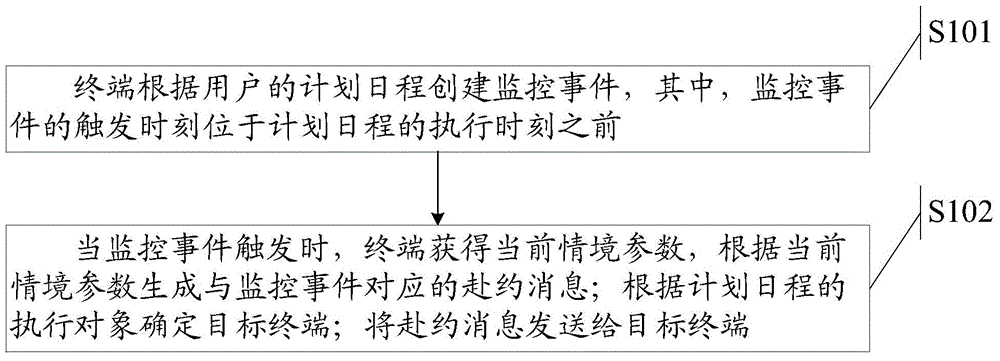Schedule managing method and terminal
A schedule management and terminal technology, applied in the field of schedule management, can solve problems affecting interpersonal relationships, work and life, unavailable, reasonable schedule management methods, etc., achieve good user experience, avoid missing or delaying appointments, and improve intelligence Effect
- Summary
- Abstract
- Description
- Claims
- Application Information
AI Technical Summary
Problems solved by technology
Method used
Image
Examples
Embodiment Construction
[0023] The embodiment of the present application provides a new schedule management method and a terminal to provide a new schedule management method, so that the terminal can inform the date of the user's appointment status in time according to the situation parameters, improve the intelligence of the terminal, and provide a good user experience.
[0024] The technical solutions of the present invention will be described in detail below through the accompanying drawings and specific examples. It should be understood that the embodiments of the present invention and the specific features in the examples are detailed descriptions of the technical solutions of the present invention, rather than limitations to the technical solutions of the present invention. In the case of no conflict, the embodiments of the present invention and the technical features in the embodiments may be combined with each other.
[0025] In a first aspect, the present invention provides a method for sche...
PUM
 Login to View More
Login to View More Abstract
Description
Claims
Application Information
 Login to View More
Login to View More - R&D
- Intellectual Property
- Life Sciences
- Materials
- Tech Scout
- Unparalleled Data Quality
- Higher Quality Content
- 60% Fewer Hallucinations
Browse by: Latest US Patents, China's latest patents, Technical Efficacy Thesaurus, Application Domain, Technology Topic, Popular Technical Reports.
© 2025 PatSnap. All rights reserved.Legal|Privacy policy|Modern Slavery Act Transparency Statement|Sitemap|About US| Contact US: help@patsnap.com



